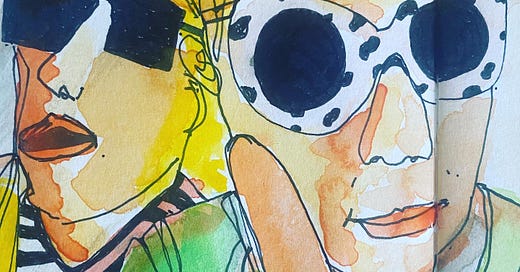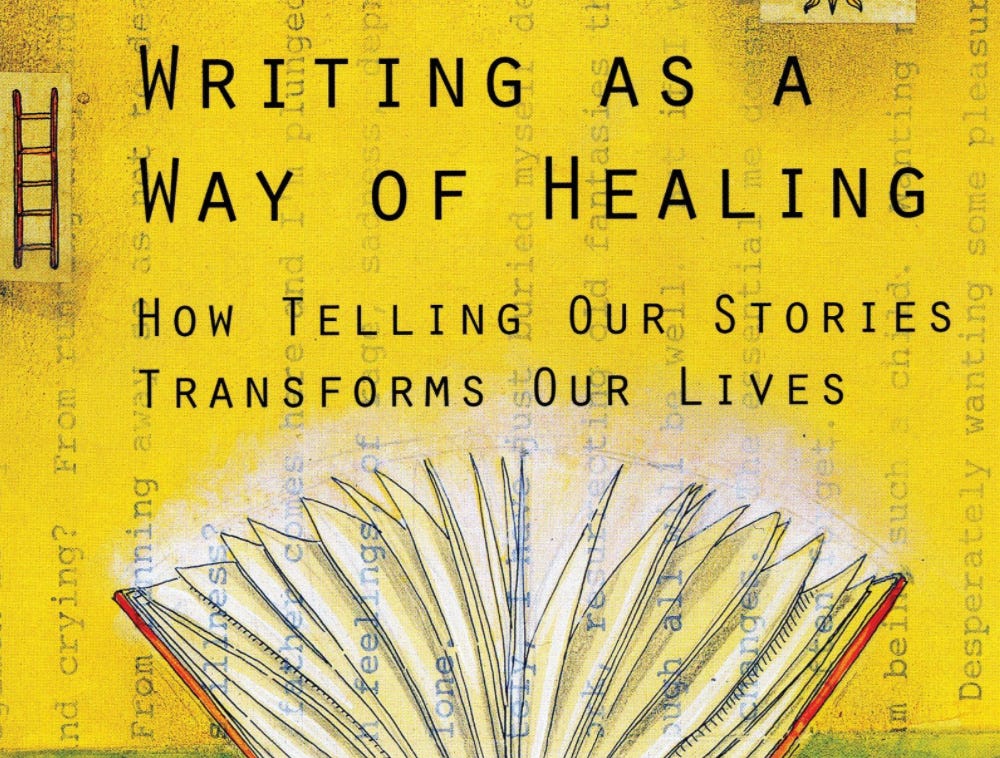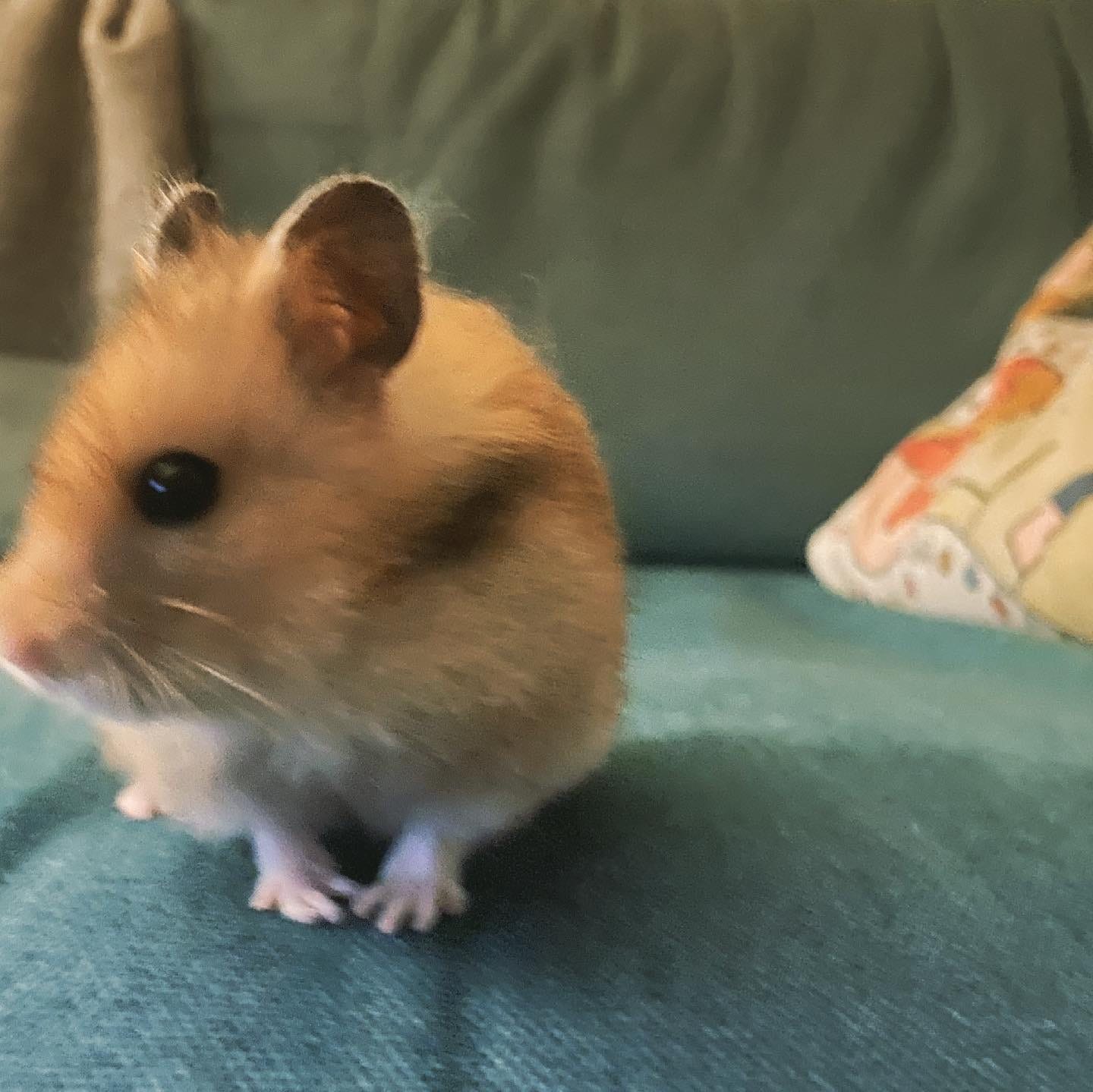Hi there! 👋 I’m Ida, and this is tiny driver, a newsletter about research, pedagogy, culture and their intersections. Thank you for being here. Reach out anytime by just hitting reply, I love hearing from you.
Hello, and happy Monday! Today’s guest newsletter comes to you from the wonderful Stephan Caspar. Stephan reached out to me last year, and I’ve been enjoying his work on Substack ever since! I am always in awe of the way he integrates technology and the digital into the classroom, so I hope that you enjoy his issue of Au-Guest Month!
Hello, I’m Stephan and Ida has asked me to be her guest writer this week. Can I say what an honor and privilege it is to take the wheel of tiny driver, one of my favorite newsletters, one that bounces into my inbox every Monday with great energy, verve, wit and brilliance, much like its regular author. I love its optimism and the empathy it shows for the rewarding but sometimes troubling, and often chaotic world of teaching and scholarship.
The easiest way to describe myself professionally is to say that I’m an educator with training in filmmaking and the creative arts. I'm also a Dad and Husband, and relatively new to the US, having moved our little family from the UK to Pittsburgh around three years ago. I joined Carnegie Mellon as a member of faculty in Modern Languages, where I teach and conduct research for The Global Languages and Cultures Room, a space for exploring language and culture through new immersive technologies such as VR.
Our move was never planned really, but we were ready for adventure, uprooting our lives on the sleepy south coast of England in exchange for a new life in the craziness of America. Some days we feel very foreign, and at other times we're just members of the community. We have experienced kindness and generosity from the people that we have met, but we’ve also encountered attitudes and politics that we find deeply troubling, and seemingly at odds with the values that this country claims to uphold. I write about this in my newsletter, trying to make sense of the news and the things we see and hear. It’s impossible for these experiences to not find their way into my work, and often I’m learning about these issues alongside my students, through the lens of an outsider.
Before we go on, I have to confess that I didn't know what a newsletter swap might entail. Ida has guided me so gently with my first go, so I'll don my chef's hat and make sure, kind reader, to serve up something tasty and nutritious.
What I write.
I'm sitting in the sun room at the side of our house. It's hot and sunny outside, the blinds are pulled down, and the only light comes from the shards of sunlight peeking through around the window and the computer screen. The fan on my desk turns slowly from side to side, there is gentle lifting and sighing of papers on my desk as the cool air blows across my face.
Writing this newsletter is a lovely way to get back into writing after a short hiatus over the summer, from my own newsletter—The Spaces in Between—and the various articles and papers that I’ve promised to academic journals and websites. I tend to write best early in the morning, slurping coffee as the household starts to wake up.
I learned last year during lockdown to try to maintain a daily writing ritual. I will write in half hour or hour long bursts, usually typing out a conversation that I'm having with myself. Later, I will edit and revise these passages, setting aside some time when I know I have a deadline looming. It is amazing how quickly the words add up, and editing then becomes a sort of conversation or q&a: Where is the evidence for this? What do you mean exactly? Why does this matter?
Writing for papers and journals is relatively new to me. It doesn't come easily, so I've welcomed help and advice when it is offered. I've been reading How to fix your academic writing trouble by Inger Mewburn, Katerine Firth and Shaun Lehmann which I wholeheartedly recommend. The authors provide me much needed reassurance. For years, I thought I was the only one who couldn't do this, and felt slightly disadvantaged having come from industry rather than studying for a Ph.D. I realize now that I'm not unique—quite the opposite. There are many of us who have taken similar paths into Higher Education. It might seem obvious to many, but I have found that writing gets easier the more you do it. Academic writing can seem forced and prescriptive when you first start writing, but soon you find room to explore ideas and set out your thinking, writing with conviction and creativity.
What I teach.
I teach digital storytelling and immersive media creation to those who are new to the field. My students are often drawn from the humanities and sciences, and exploring digital media for the first time. Often, people come to my courses thinking they are going to be very technical but they are often surprised that the emphasis is on storytelling to explore culture and identity.
My courses are active, usually project-based, and outcomes are almost always digital pieces or portfolios. I love to run my space as a workshop: we play with legos, try on headsets, lay out big pieces of flip chart paper, and develop ideas by drawing pictures with sharpies while diving deep into discussion. My courses ask students to explore aspects of their own identity. I want them to center themselves in their learning, but this can be challenging. It often means there are no right or wrong answers, just more questions. For some students, the course seems to make sense just as they're finishing up their final projects.
Over the years I've found it really useful to reflect on my teaching. I feel as if I'm always taking on new ideas, changing and adapting what I do. I remember when I started, I would teach the same graphics lesson three times in one day. The first session would go just as planned, the second would fall on its arse, and the third would be something entirely different again! The students, the time of day, whether you skipped lunch, how the technology behaved, who you have with you in the classroom, all these things affect the moment. So I'm sure you'll understand that I see teaching as more art than science (although it's nice when the science supports what you do).
The pedagogy that inspires me most is making, whether that’s building and constructing, experimenting or playing. I want students to use their hands and learn through doing. In class we explore language, culture and technology, apply design-thinking, and encourage creativity. We draw, make zines and comics, build cardboard models and shape play-dough sculptures. For some it is great to see them flex these creative muscles that they have not used since they were very young.
I share that sense of rediscovery. It wasn’t until our move to the US that I started drawing and sketching again. I am learning to draw with pen and watercolor, the things around me: places, objects, people, cups of tea (I *do* draw a lot of cups of tea). I try to do this as often as I can. I can’t fathom, for some reason, we teach ourselves to be afraid of picking up a pen or pencil, we tell ourselves we'll never be great artists, but I'm sure we all sing in the shower and never worry about not sounding as good as Adele.
What I consume.
For August’s book club, we will be reading Writing as a Way of Healing by Louise DeSalvo! Thank you to everyone who voted, and feel free to purchase a copy of the book here! Details are below.
Here’s the event info:
Date & Time: Tuesday, August 31 @ 5PM PST/8PM EST
Registration Link!
Suggested donation (for those able to donate): $3-20 through Paypal or Venmo (@idyalz)
I’ve put down some of my regular reading over the summer to pick up a few fun things. This isn’t going to seem particularly high-brow, but sometimes kicking back is just what you need.
Once upon a time in Hollywood by Quentin Tarantino. More than a novelization of the film, it is a treatise on 70's American Cinema through the backstories of its characters. It’s perhaps the most fascinating read about this era since Raging Bulls and Easy Riders by Peter Biskind.
Adam Buxton is a comedian and podcaster who wanders the Norfolk countryside with his dog-friend Rosie. Ramble Book is his first memoir, covering his childhood, his break into TV, his love of David Bowie, and his difficult relationship with his dad.
I bought Miles Morales Spiderman by Jason Reynolds for my fourteen year old, but he hasn't got round to reading it yet. I, however, jumped on it. Brilliantly written, great action, thought-provoking and full of heart.There’s a real enjoyment for me in reading teen fiction. I remember Nick Hornby stating in Stuff I've Been Reading that youth fiction provided him with some of the most rewarding reading experiences that he'd ever had.
In fact, Nick Hornby’s book included "On Fire" by Larry Brown, an incredible, fascinating, and dramatic account drawn from his years as a firefighter in Oxford, Mississippi. This is absolutely one of the best books I have ever read.
I have a ton of academic reading to catch up on, but the summer reading window is still slightly open for Intimations by Zadie Smith, my favourite author and human that I enjoy listening to everytime she is interviewed for a podcast.
I can't leave this section without recommending Felix Scheinberger's "Dare to Sketch: Drawing on the go," which I credit for inspiring me to pick up a pen and make marks on paper. This is the liberating, empowering drawing guide that you need. Mercilessly free of technique, no shading of apples or endless study of anatomy—just the freedom to draw, make mistakes and create energy.

Item(s) of note.
Accompanying me on my walks is the Comfort Eating podcast presented by British columnist and food critic Grace Dent. Each week, she talks to a guest about the food that evokes a special memory and that they might consume while sitting on the sofa or rustle up quickly when they're cooking for one. I love the episode with actor Rafe Spall, it is hard to hear him talk about the pressure of weight loss, as one of the few male actors who regularly suffers the press scrutiny commonly reserved for women.
I'm glued to the Olympics at the moment. While there have been magical moments, the shadows of the ICC loom large over the event.
Artist Steve Chapman has asked people to put up his (Not a) lost cat posters across the world. I found a spot in the Southside Color Park to put the poster, and it's still there almost a month later. You can read more about the project and request a poster at his website (he's still looking for South American locations).

Every Monday morning, I look forward to illustrator Kate Bingaman-Burt's brilliant newsletter, who crafts possibly the most essential weekly mix-tape that any artist, painter, designer or printmaker needs (I know that's a narrow field). Kate is a wonderful educator who provided inspiration to me early in my career teaching graphics and dark-room photography (you should have seen the kid's faces when the print appeared). She was the first person I knew to publish her syllabus online and use a blog to showcase work and communicate with her students.
A pup-date. (hamster-date?)
We wish we had a dog! The closest we make do with is the occasional house-sitting for Mr. Coconut Houdini DeSouza, our friends Meera and Avi’s hamster. He’s pretty easy going, but much more nocturnal than we expected. He sits and eats dried strawberries late into the evening while we watch whatever HBO mini-series that we’re plugged into that week.
Our furry friends have kept us company during these troubling times and kept us grounded and loved and entertained us with their antics.
Good luck out there, thank you again, it's been great chatting with you, please do take care of yourself and keep up the good work.
Stephan






